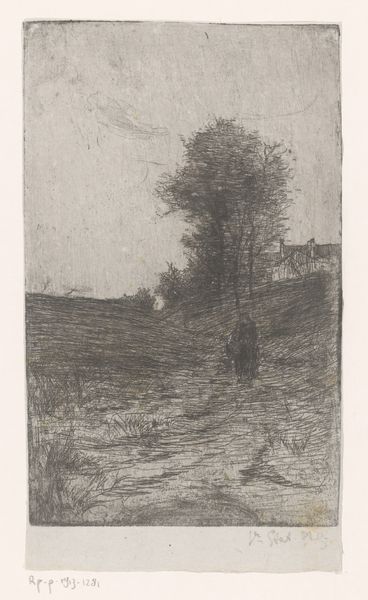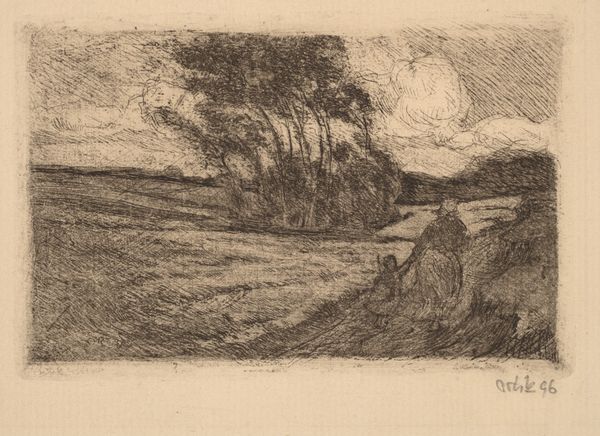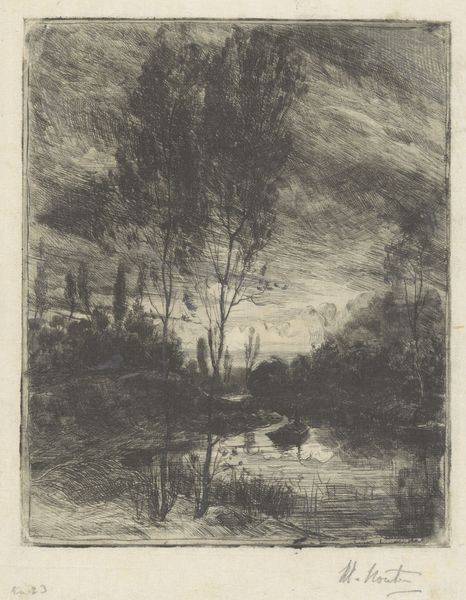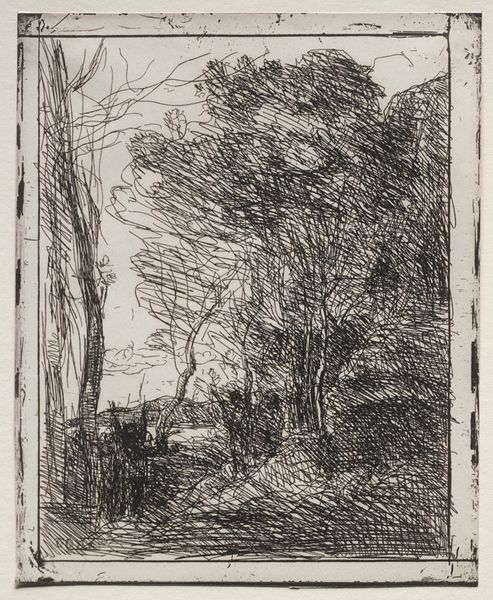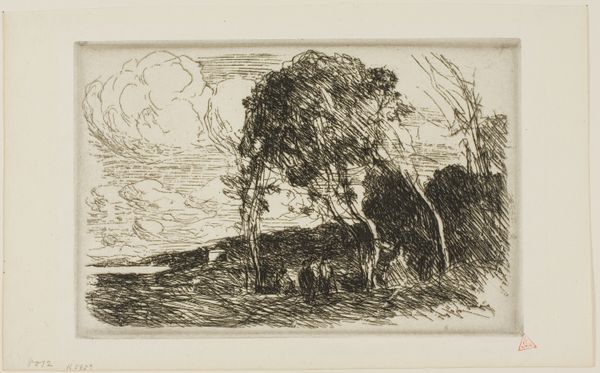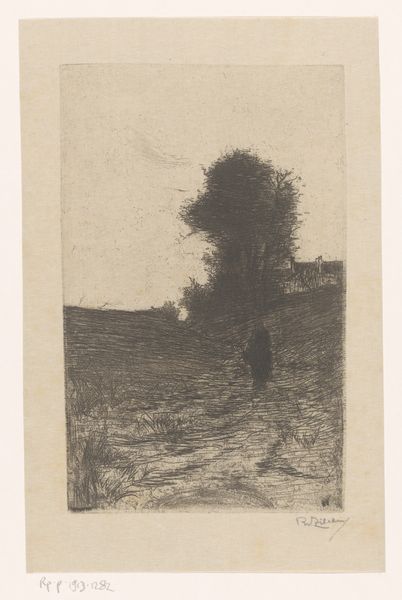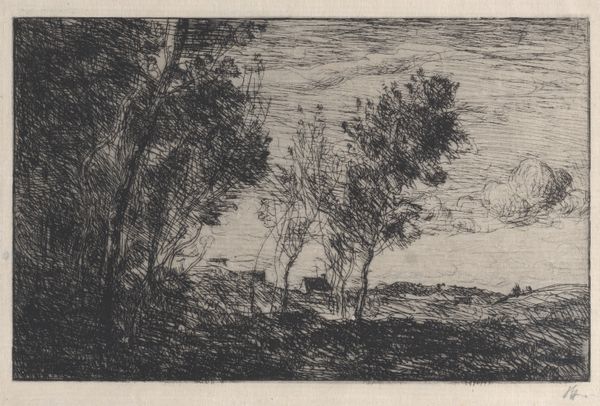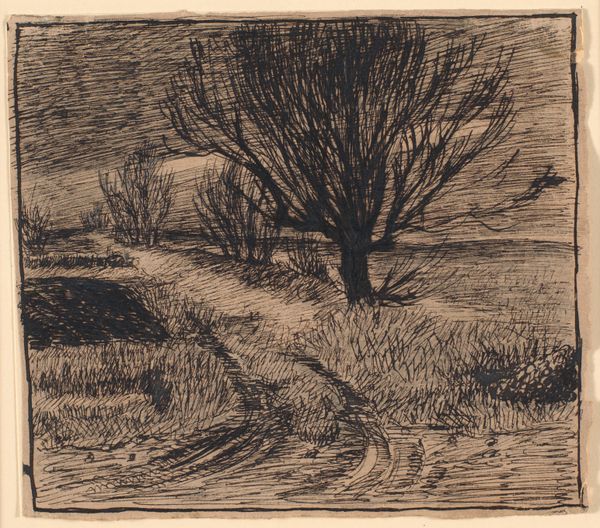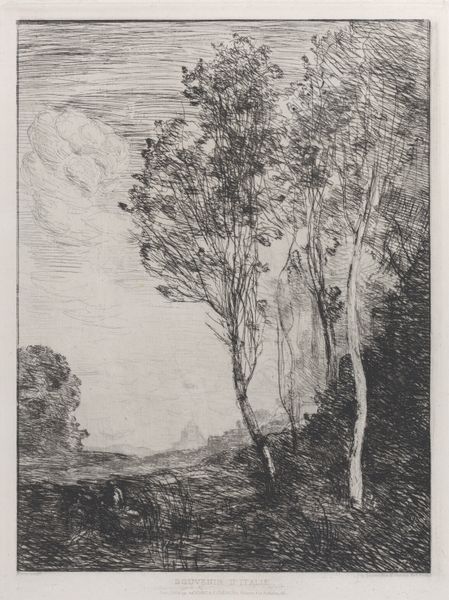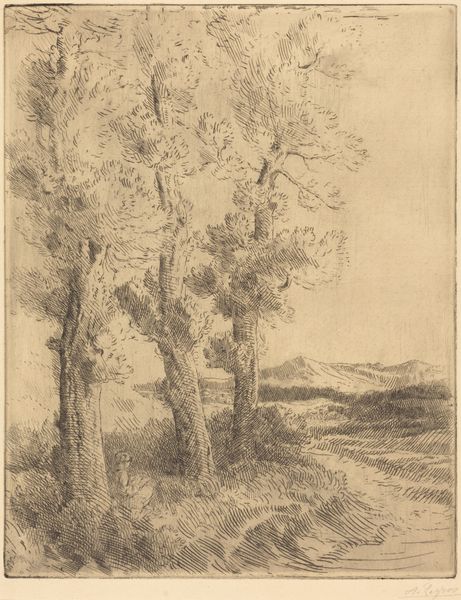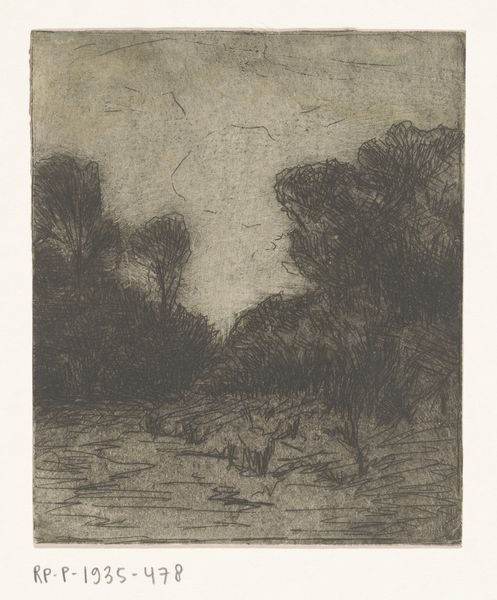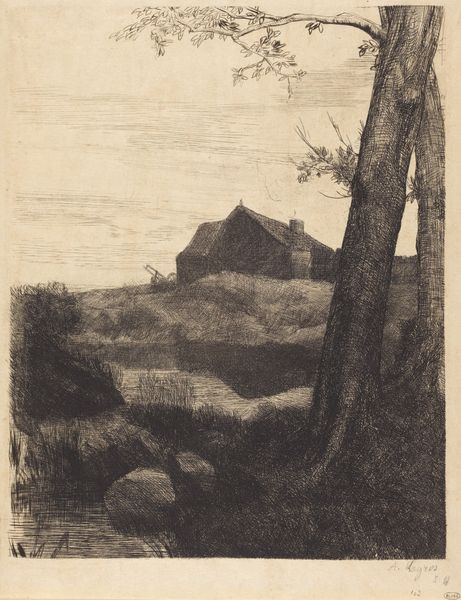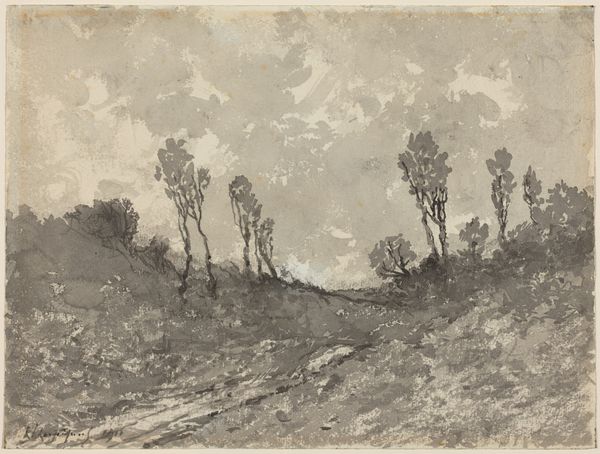
print, etching
# print
#
etching
#
landscape
#
realism
Dimensions: image: 19.8 x 16.6 cm (7 13/16 x 6 9/16 in.) sheet: 26 x 20.3 cm (10 1/4 x 8 in.)
Copyright: National Gallery of Art: CC0 1.0
Curator: This is Charles Warren Eaton's "Landscape," an etching dating from around 1910. Editor: Immediately, it evokes a feeling of solitude. The lone tree against that tumultuous sky… it feels like a quiet defiance. The scale amplifies that feeling, somehow, this intimate etching holding such a vast emotional space. Curator: The printmaking process is key here. Look at the density of the lines, creating depth and texture, all achieved through meticulous incisions. Eaton’s choice of etching also places him within a broader tradition of printmaking that was becoming increasingly accessible, democratizing art production. How does that labor, that process, influence your reading? Editor: It’s there in the grit of the image itself. You feel the artist’s hand in every mark. It's like capturing a fleeting moment with something so grounded, so tactile. That sky, those etched lines suggest turmoil but that tree suggests hope - how amazing, from something man-made, something manipulated, nature still shines through. Curator: It’s interesting you interpret the sky as turmoil. Eaton was part of the American tonalist movement, valuing atmosphere and mood over strict representation. Those strokes, to me, suggest a kind of pastoral serenity, almost a hazy dreamscape, given its date. This was an increasingly industrialized era. How did prints mediate lived experiences with industrial outputs? It wasn't fine art, exactly. It was widely marketed. Editor: Exactly. A manipulated sentiment in some ways. But I feel like all art is manipulating sentiments. Maybe that is where fine art ends up… anyway. To me it echoes a time of longing, of yearning for something just out of reach. You are making me wonder, does the process become a barrier, obscuring reality to shape that ideal? Curator: Possibly. The commercial reproduction does become a form of manufacturing affect. But that also creates different kinds of accessibility, challenging previous artistic conventions. So, where are we at? Editor: I am thinking I initially judged it from within my emotional weather - where am *I* at. Thanks for the needed perspective, I need the reminder to ask more about context. Curator: And vice versa. This has shifted my view.
Comments
No comments
Be the first to comment and join the conversation on the ultimate creative platform.
